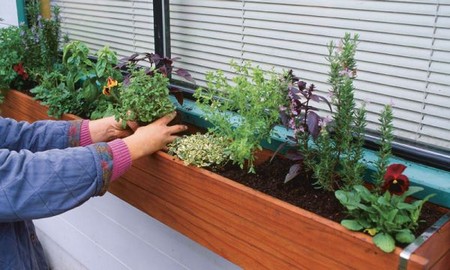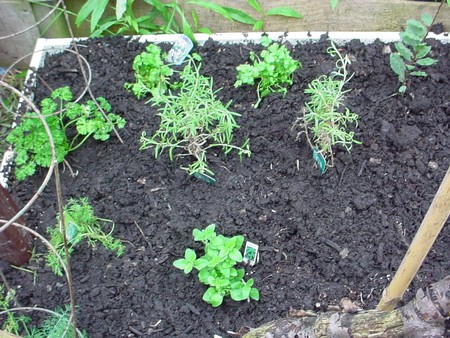Best Way to Control Pests and Diseases When Growing Herbs
Generally herbs seem to be more resistant to disease and insect attack than many garden plants. This may be because most garden herbs are little changed from their wild ancestors, while many other garden plants have been selected or hybridized. Herbs often have chemical components that provide protection.
Horseradish and other plants of the mustard family (Cruciferae), for instance, release hot-flavoured mustard oil (allyl isothiocyanate). When attacked, its strong taste repels many pests. Cultivated btassicas, on the other hand, tend to have been bred or selected for milder flavours and therefore will have less allyl isothiocyanate and correspondingly lower resistance to pests.
The most widespread anti-insect compounds found in plants are tannins. In midsummer the leaves of some oak trees increase their tannin content and it has been shown that the numbers of insect species feeding suddenly drops. Many plants in the rose family (Rosaceae) — including agrimony, tormentil, blackberries, and raspberries – have in their leaves high levels of tannins, which act as an insect deterrent.
There can be a downside to this, however. Although many herb plants can similarly persuade a range of insect and animal attackers to stay away, if one insect species is not harmed by the toxin produced by the plant, it can take advantage of the lack of competition and specialize in that type of plant. Such insects then may become dependent on, and a particular pest to, that otherwise protected plant. In the case of the Cruciferae, that is what has happened with the Cabbage White butterfly (Pieris brassicae). The mustard oil entices it to lay its eggs on cabbage plants and their relatives.
Protecting herbs
However hard herbs work to defend themselves, they are not immune to pests and diseases, and it is likely that you will need to take measures 10 protect them.
The healthier plants and their environment are, the less susceptible they will be to attack. To this end, the herb gardener will be wise lo maintain the quality of the soil by regularly incorporating organic matter; to buy plants in good condition; and to plant the right plant in the right place.
Including a wide range of plants helps prevent pests from taking control, because a diversity of plants encourages a diversity of wildlife: for example, birds as well as ladybirds and other beneficial insects that feed on pests. Good drainage and good air circulation (avoiding overcrowding of plants) are crucial to prevent root rot and many other diseases. Keep beds free from plant debris, and take care to remove any diseased or damaged parts of plants as soon as possible. With vigilance, you can pick off pests such as beetles or slugs before too much damage is done.
Pesticides and fungicides should be avoided so far as possible. It is important to remember that organic pesticides, like synthetic pesticides, can be poisonous and will usually kill beneficial insects along with the pests. Again like synthetic pesticides, some may have the further side-effect of killing micro-organisms in the soil. If, as a last resort, you feel you have to turn to an organic pesticide, you should be sure to check the legal situation. For example, in the UK, under the Control of Pesticides Regulations 1 986, it is illegal to use any pesticide other than those officially approved and listed in the current UK Pesticide Guide.
Categories
Advertisements
Recent Articles
 How to Understand Bed Sizes – A Small Guide
How to Understand Bed Sizes – A Small Guide How to Select Some Must Have Kitchen Accessories
How to Select Some Must Have Kitchen Accessories Best Way to Change a Car Tire
Best Way to Change a Car Tire Best Way to Write an Affirmation
Best Way to Write an Affirmation Best Way to Take Charge of Your Financial Life
Best Way to Take Charge of Your Financial Life Best Way to Survive a Party When You Don’t Know Anyone
Best Way to Survive a Party When You Don’t Know Anyone Best Way to Stop Self Sabotaging Yourself
Best Way to Stop Self Sabotaging Yourself Best Way to Start Journal Writing
Best Way to Start Journal Writing Best Way to Speak with a Powerful Voice
Best Way to Speak with a Powerful Voice Best Way to Simplify Your Life
Best Way to Simplify Your Life Best Way to Respond to a Put-Down
Best Way to Respond to a Put-Down Best Way to Reduce Acne Breakouts
Best Way to Reduce Acne Breakouts Best Way to Recover from Dining Disasters
Best Way to Recover from Dining Disasters Best Way to Quit Your Job Gracefully
Best Way to Quit Your Job Gracefully Best Way to Make Your Own Website
Best Way to Make Your Own Website



Leave a Reply